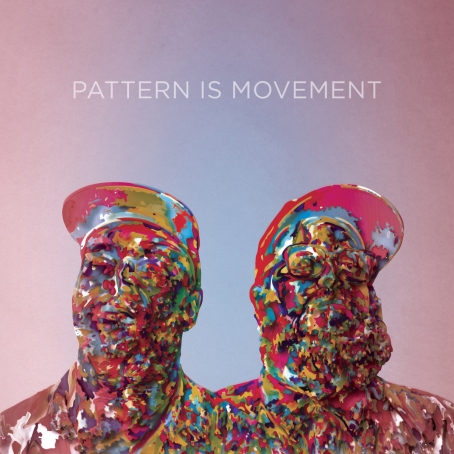One of the first questions demanded by Pattern is Movement’s recent self-titled album (via Hometapes) is “why the hell is this the self-titled album?” Such a thing is typically reserved for a group’s freshman effort, and not only is this the band’s fifth album, but they’ve been putting out music since 2004. It’s unorthodox, to say the least. But upon listening to the record, the second since they broke down to a minimalist two-person outfit in 2008, it becomes rather clear; the self-titled is meant to define a band’s sound and create their baseline, and Chris Ward and Andrew Thiboldeaux consider themselves to only just now have reached that point. This is their way of finally defining themselves as a band, and it sounds wild and fantastic.
To summarize, the most recent development of the band’s sound is a difficult task, since it’s really a great deal more than the sum of its genres and musical elements. It’s definitively indie, but with elements of ambient, folk, experimental math rock and even soul, all blended into its DNA, with just a hint of European sensibility. It’s almost impossible to not draw a comparison to the band Beirut and not just because of how eerily similar the two vocalists sound. Pattern is Movement captures the same sense of almost exuberant melancholy, and even manages to surpass it.
It’s difficult to hear that the band is a two-man outfit without being at least a bit incredulous. The very idea that this group is limited in manpower in any way whatsoever is almost unbelievable; if anything, their most recent album sounds like the culmination of an Arcade Fire-esque indie rock orchestra, with a huge variety of instrumentals weaving in and out of one another seamlessly. Piano, accordion, bass, and a varity of string instruments all make appearances (all played by the singular Andrew Thiboldeaux) draped over Ward’s substantial percussion.
And it’s just as seamless that the band manages to blend highbrow orchestral folk with more accessible elements of indie shoegaze and math rock, creating a sense of real artistic unpredictability, while maintaining a consistent and enjoyable sound – not surprising from a band who once backed Annie Clark, a.k.a. St. Vincent. Pattern is Movement finds the line of balance between weird and familiar, and positively jumps rope with it. The band accomplishes the rare task of managing to sound lofty without ever coming across as pretentious. And special praise needs to be given to Thiboldeaux’s aforementioned vocals; they’re simply haunting. The crooning, Sigur Ros-esque lyrics are the center piece of the album, acting as the anchor for the bands increasingly outlandish instrumentals.
The result is heady, weird and even sexy (but in a confusing, subtle way), but at all times cool. Its soothing and enticing, and at times a bit morose. Pattern is Movement has a way of blending a sense of depth and an accessible tone for an album that begs repeat listens.
